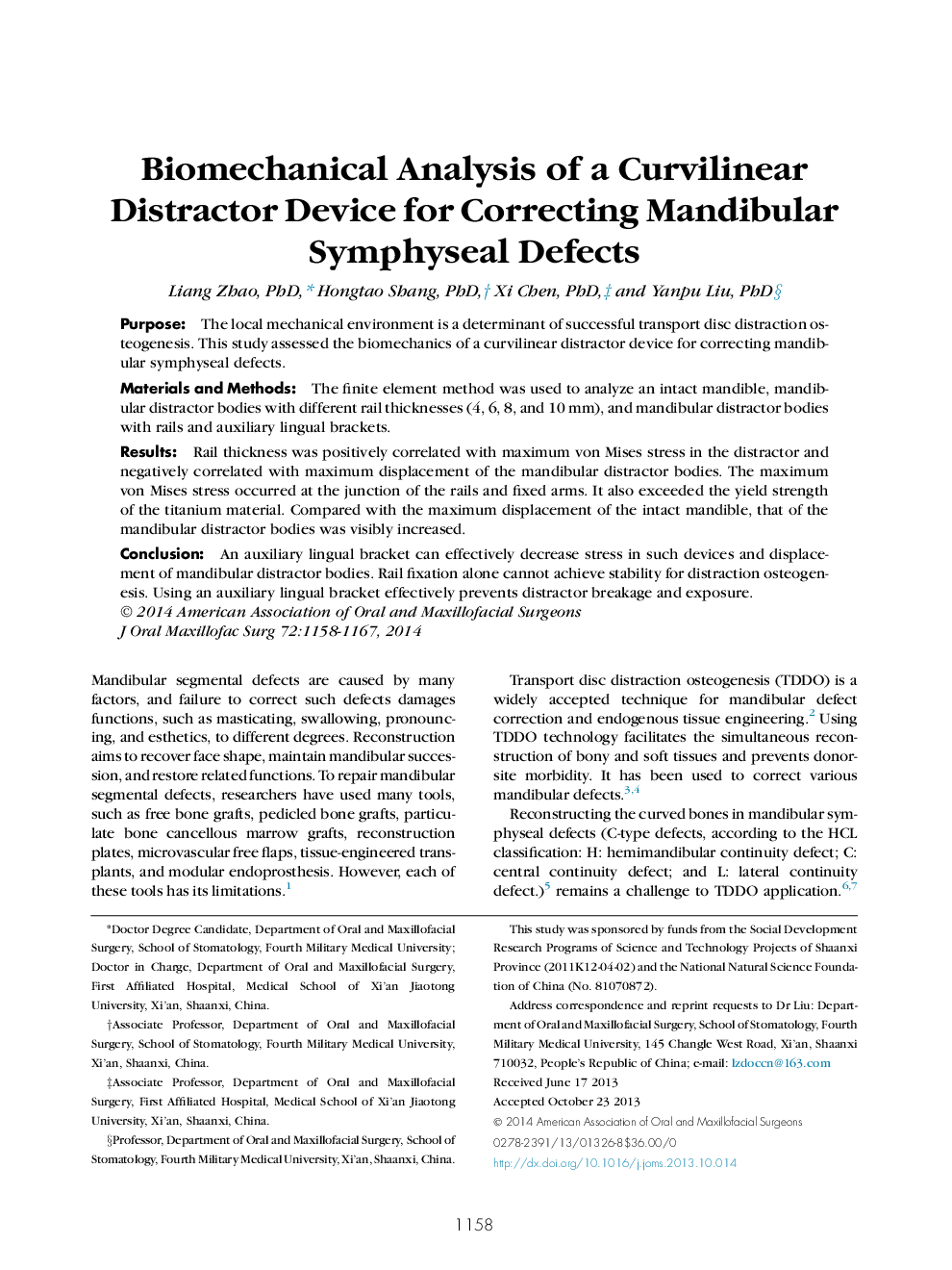| Article ID | Journal | Published Year | Pages | File Type |
|---|---|---|---|---|
| 3156310 | Journal of Oral and Maxillofacial Surgery | 2014 | 10 Pages |
PurposeThe local mechanical environment is a determinant of successful transport disc distraction osteogenesis. This study assessed the biomechanics of a curvilinear distractor device for correcting mandibular symphyseal defects.Materials and MethodsThe finite element method was used to analyze an intact mandible, mandibular distractor bodies with different rail thicknesses (4, 6, 8, and 10 mm), and mandibular distractor bodies with rails and auxiliary lingual brackets.ResultsRail thickness was positively correlated with maximum von Mises stress in the distractor and negatively correlated with maximum displacement of the mandibular distractor bodies. The maximum von Mises stress occurred at the junction of the rails and fixed arms. It also exceeded the yield strength of the titanium material. Compared with the maximum displacement of the intact mandible, that of the mandibular distractor bodies was visibly increased.ConclusionAn auxiliary lingual bracket can effectively decrease stress in such devices and displacement of mandibular distractor bodies. Rail fixation alone cannot achieve stability for distraction osteogenesis. Using an auxiliary lingual bracket effectively prevents distractor breakage and exposure.
